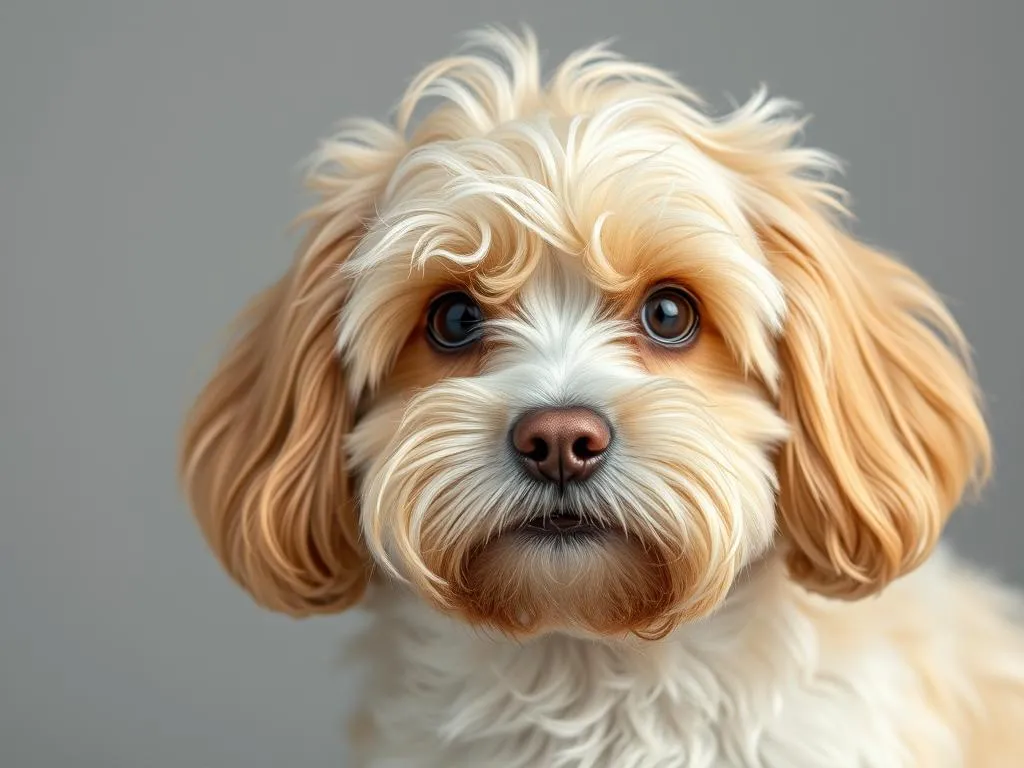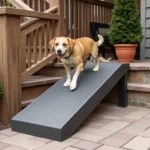
Introduction
Cockapoos, a delightful hybrid breed resulting from the cross between a Poodle and a Cocker Spaniel, have gained immense popularity among dog lovers. Their endearing personality, intelligence, and sociable nature make them cherished companions. However, as with many dog breeds, understanding their emotional health is crucial. One common concern among dog owners is whether their furry friends experience separation anxiety. This article delves into the specifics of separation anxiety in Cockapoos, offering insights on how to manage and prevent it effectively.
Understanding Cockapoos
Breed Characteristics
Cockapoos are known for their charming looks and friendly disposition. They typically range from small to medium in size, weighing between 12 to 24 pounds, depending on whether they inherit more traits from their Poodle or Cocker Spaniel parent. Their coat can be curly or wavy, requiring regular grooming to keep it in tip-top shape.
In terms of temperament, Cockapoos are affectionate, playful, and eager to please. They are highly intelligent, which makes training them relatively easy. However, their social nature means they thrive on human interaction, often forming strong bonds with their owners.
Social Nature of Cockapoos
One of the most significant aspects of Cockapoos is their sociable demeanor. They are known to be friendly with both adults and children, making them excellent family pets. Their need for companionship can play a vital role in their emotional health. A Cockapoo that feels isolated may be more susceptible to anxiety, particularly separation anxiety. This breed often does not fare well when left alone for extended periods, emphasizing the importance of companionship in their lives.
What is Separation Anxiety?
Definition
Separation anxiety in dogs is a behavioral condition that occurs when a dog becomes excessively distressed when left alone or separated from their owner. This anxiety can manifest in various ways and is not confined to any specific breed, although some breeds may be more predisposed to it.
Common Symptoms
Recognizing the signs of separation anxiety is crucial for timely intervention. Common symptoms seen in Cockapoos include:
- Excessive barking or howling
- Chewing or destroying furniture or belongings
- Urinating or defecating inappropriately
- Pacing or restlessness
- Salivating or drooling excessively
Causes of Separation Anxiety
Several factors can contribute to the development of separation anxiety in Cockapoos. These include:
- Genetics: Some dogs may inherit a predisposition to anxiety from their parents.
- Past Experiences: Dogs that have experienced abandonment or traumatic events may be more prone to anxiety.
- Lack of Socialization: Insufficient exposure to different environments and experiences during their formative months can contribute to anxiety issues.
Do Cockapoos Get Separation Anxiety?
Breed-Specific Tendencies
While any dog can develop separation anxiety, Cockapoos may be particularly vulnerable due to their strong attachment to their owners. Their affectionate nature means they may find it challenging to cope when left alone. Many Cockapoo owners have reported instances of anxiety-related behaviors, particularly if their dog has not been gradually acclimatized to alone time.
Emotional Dependency
Cockapoos thrive on human interaction and can become emotionally dependent on their owners. This dependency can lead to anxiety when faced with separation. If a Cockapoo is not accustomed to spending time alone, they may struggle when left alone for even short periods.
Personal Experiences and Case Studies
Numerous Cockapoo owners have shared their experiences with separation anxiety. For instance, one owner reported that their Cockapoo would bark incessantly and chew on furniture whenever left alone. Another noted that their dog would become overly excited upon their return, indicating a strong emotional connection. These anecdotes highlight the importance of recognizing and addressing anxiety in Cockapoos.
Recognizing Signs of Separation Anxiety in Cockapoos
Behavioral Indicators
When it comes to identifying separation anxiety in Cockapoos, here are some behavioral indicators to watch for:
- Barking or Howling: Excessive vocalization when left alone is a classic sign.
- Destructive Behavior: Chewing on furniture or personal items is a way for anxious dogs to cope with stress.
- Pacing: A dog that is restless and unable to settle may be experiencing anxiety.
- Clinginess: If your Cockapoo follows you everywhere or struggles to be apart from you, it could indicate separation anxiety.
Physical Symptoms
In addition to behavioral signs, there are physical symptoms that may indicate your Cockapoo is struggling with anxiety:
- Excessive Drooling: This can be a stress response.
- Pacing: Dogs that pace back and forth may be feeling anxious.
- Panting: Anxiety can cause increased heart rate and breathing.
- Loss of Appetite: An anxious dog may refuse to eat or drink.
Monitoring Your Cockapoo
To effectively monitor your Cockapoo’s behavior when left alone, consider the following tips:
- Video Monitoring: Use a pet camera to observe your dog’s behavior when you’re not home.
- Record Keeping: Keep a journal of your dog’s behavior patterns to identify triggers or specific times of increased anxiety.
- Gradual Alone Time: Start with short periods of separation and gradually increase the time apart to help your Cockapoo adjust.
Managing and Preventing Separation Anxiety
Training Techniques
Implementing effective training techniques is crucial in managing separation anxiety in Cockapoos. Here are some methods to consider:
- Gradual Desensitization: Start by leaving your Cockapoo alone for short periods, gradually increasing the duration as they become more comfortable.
- Positive Reinforcement: Reward your Cockapoo for calm behavior when you leave and return home. This can help create positive associations with being alone.
Creating a Safe Space
Creating a safe and comfortable environment for your Cockapoo can help reduce anxiety. Consider the following strategies:
- Cozy Bed: Provide a comfortable bed or crate where your Cockapoo can feel secure.
- Calming Items: Include soft toys or items with your scent to provide comfort when you’re away.
Use of Toys and Distractions
Keeping your Cockapoo engaged can significantly reduce anxiety. Here are some recommended toys and distractions:
- Puzzle Toys: These toys can keep your Cockapoo mentally stimulated and focused on solving the puzzle.
- Kong Toys: Fill a Kong with treats or peanut butter to keep your dog entertained for a while.
- Interactive Games: Play hide and seek with toys or treat-dispensing games to keep them occupied.
Professional Help
If your Cockapoo’s anxiety persists despite your best efforts, it may be time to consult a veterinarian or a certified dog behaviorist. They can provide tailored advice and, if necessary, recommend treatment options such as anxiety medication or specialized training programs.
Lifestyle Adjustments for Cockapoo Owners
Daily Routine
Establishing a structured daily routine can help your Cockapoo feel secure. Regular feeding times, walks, and play sessions can create a sense of stability and predictability in their day-to-day life.
Socialization Opportunities
Encouraging social interactions can help build confidence in your Cockapoo. Consider enrolling them in puppy classes or arranging playdates with other dogs. These experiences can help your dog learn to cope with being apart from you while also enhancing their social skills.
Exercise and Mental Stimulation
Regular physical and mental exercise plays a crucial role in managing separation anxiety. Daily walks, play sessions, and engaging activities can help burn off excess energy, leading to a calmer and more relaxed dog. Activities to consider include:
- Agility Training: This can provide both physical and mental stimulation.
- Interactive Fetch: Use toys that require your dog to think and move.
- Scent Work: Hide treats around the house for your Cockapoo to find, engaging their natural sniffing instincts.
Conclusion
Understanding whether Cockapoos get separation anxiety is essential for their well-being. Their affectionate nature and strong bond with their owners can make them particularly susceptible to anxiety when left alone. By recognizing the signs, implementing effective management strategies, and making lifestyle adjustments, you can help your Cockapoo feel more secure and content. Proactive measures will not only enhance your dog’s quality of life but also strengthen the bond you share.
FAQs
-
Do all Cockapoos suffer from separation anxiety?
Not all Cockapoos will experience separation anxiety, but they can be more prone to it due to their social and affectionate nature. -
Can separation anxiety be cured?
While it may not be entirely “cured,” it can be effectively managed with training and environmental adjustments. -
How can I help my Cockapoo feel more secure when I leave?
Create a safe space, provide engaging toys, and gradually increase the time they spend alone to help them adjust. -
Is professional help necessary for managing separation anxiety?
If your efforts to manage separation anxiety are not effective, seeking professional help can provide tailored solutions for your Cockapoo.









